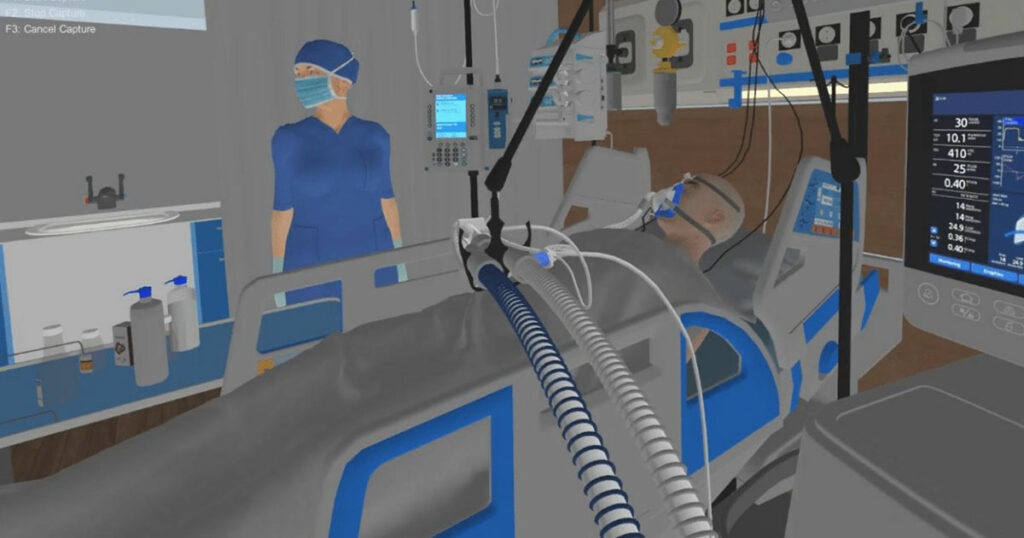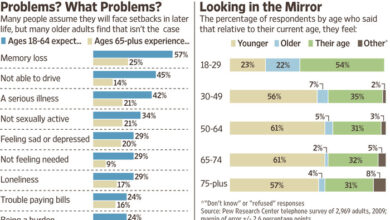
How the pandemic led to the rise of virtual rehab dramatically reshaped healthcare, forcing a rapid shift towards online solutions. Lockdowns and social distancing measures severely limited access to traditional rehabilitation services, creating a critical need for alternative methods. This article explores the impact of the pandemic, the emergence of virtual platforms, accessibility issues, and the future of virtual rehabilitation.
The pandemic’s restrictions highlighted the limitations of traditional rehabilitation, emphasizing the need for adaptability and innovation. Patients and therapists alike faced new challenges, but also discovered opportunities for enhanced care through virtual platforms. This evolution transformed the landscape of rehabilitation, offering new possibilities for patients and therapists alike.
Impact of Lockdown Restrictions on Traditional Rehab
The COVID-19 pandemic dramatically altered the landscape of healthcare, including rehabilitation services. Lockdown restrictions and social distancing measures imposed significant limitations on traditional rehabilitation approaches, forcing a rapid shift towards virtual and alternative methods. This change impacted not only the accessibility of services but also the quality and effectiveness of care for patients across various rehabilitation needs.Traditional rehabilitation services, deeply reliant on in-person interaction and physical proximity, faced unprecedented challenges during the pandemic.
The restrictions imposed on patient movement, clinic operations, and the ability of therapists to provide hands-on care created a ripple effect throughout the rehabilitation ecosystem. This disruption affected patients’ recovery journeys, leading to potential setbacks and longer rehabilitation times in many cases.
Limitations on In-Person Services
Lockdowns and social distancing measures directly curtailed the availability of in-person rehabilitation services. Clinics had to drastically reduce their capacity to accommodate patients, leading to longer wait times and reduced access. This limitation impacted patients across a wide spectrum of needs, from post-surgical recovery to chronic pain management. Physical therapy sessions, occupational therapy interventions, and speech therapy programs were all significantly affected.
Challenges Faced by Patients
Patients seeking rehabilitation services encountered substantial hurdles during the pandemic. Restrictions on movement and travel limited access to facilities, while social distancing measures made it challenging to attend appointments and receive essential hands-on care. Concerns about exposure to the virus also played a role in reducing patient attendance, further hindering the recovery process. The fear of infection and limited access to transportation often made it difficult for patients, especially those with mobility limitations, to adhere to their rehabilitation schedules.
Shift Towards Alternative Methods
The limitations on traditional rehabilitation methods prompted a significant shift towards virtual rehabilitation options. Teletherapy, online exercises, and remote monitoring tools became crucial in maintaining continuity of care. This shift was necessary to ensure that patients continued to receive essential support and guidance during the pandemic.
Specific Rehabilitation Services Affected
Various types of rehabilitation services were significantly impacted by the pandemic restrictions. Physical therapy, requiring hands-on interaction and movement, was particularly affected. Occupational therapy, focused on adapting daily tasks to the patient’s abilities, also suffered from the limitations of in-person interaction. Speech therapy, which depends heavily on face-to-face communication and interaction, experienced similar challenges.
Comparison of Pre-Pandemic and Pandemic-Era Rehabilitation Access
| Category | Pre-Pandemic | Pandemic Era |
|---|---|---|
| Location | In-person clinics, hospitals, and rehabilitation centers | In-person clinics (reduced capacity), virtual platforms (teletherapy, online exercises) |
| Method | Hands-on therapy, group sessions, individualized programs | Teletherapy, remote monitoring, online exercises, reduced group sessions |
| Limitations | Limited wait times, ease of access, potential for face-to-face interaction | Longer wait times, reduced capacity, limitations on hands-on therapy, potential for technology limitations, reduced group sessions |
Emergence of Virtual Platforms and Technologies: How The Pandemic Led To The Rise Of Virtual Rehab
The COVID-19 pandemic accelerated the adoption of telehealth and virtual technologies across numerous sectors, and rehabilitation was no exception. Suddenly, in-person therapies faced unprecedented limitations, prompting a rapid shift towards virtual solutions. This shift wasn’t just a temporary measure; it highlighted the potential of virtual rehabilitation to expand access, improve convenience, and potentially enhance outcomes for patients.Virtual rehabilitation, driven by the need for remote care during lockdowns, has become a critical component of the modern healthcare landscape.
It leverages technology to provide therapeutic interventions, exercise programs, and support systems to patients remotely. This approach offers unique advantages in terms of accessibility and flexibility, especially for individuals with mobility limitations or geographical constraints.
Rapid Adoption of Telehealth and Online Platforms
The pandemic forced a rapid acceleration in the adoption of telehealth and online platforms for rehabilitation. Providers quickly adapted existing technologies and developed new platforms to deliver therapy remotely. Video conferencing tools became essential for virtual consultations, assessments, and ongoing support. This rapid transition demonstrated the adaptability of the healthcare sector to evolving circumstances.
Different Types of Virtual Rehabilitation Programs
Several types of virtual rehabilitation programs emerged to address various needs. These included virtual exercise programs, cognitive rehabilitation exercises, virtual reality-based therapy, and remote support groups. Each type tailored the delivery of therapy to different patient populations and conditions, leveraging the unique capabilities of the technology. For example, virtual reality (VR) therapy can be used to simulate real-world environments for patients with anxiety or phobias, allowing them to practice coping mechanisms in a safe, controlled setting.
Key Technological Advancements
Several technological advancements facilitated the growth of virtual rehabilitation. These include improved video conferencing quality, user-friendly software applications, and the development of interactive exercise programs. High-definition video and audio ensured clear communication and accurate assessment during remote consultations. Intuitive interfaces minimized user learning curves and increased patient engagement. Interactive exercises, often incorporating gamification, motivated patients to adhere to their therapy plans.
Effectiveness of Virtual Rehabilitation
The effectiveness of virtual rehabilitation varies depending on the specific condition being treated. For conditions like musculoskeletal injuries, virtual exercise programs can be highly effective when combined with proper patient education and monitoring. However, for complex mental health conditions, virtual rehabilitation may be less effective than in-person therapy, especially when addressing social or emotional needs. Studies on the effectiveness of virtual rehabilitation are still emerging, and further research is needed to determine the optimal use of virtual platforms for various conditions.
The pandemic forced a lot of us into our homes, and with that came a surge in virtual rehab programs. This was particularly helpful for conditions like pulmonary aspergillosis allergic bronchopulmonary type, pulmonary aspergillosis allergic bronchopulmonary type , where in-person appointments could be risky or difficult to arrange. It was a game-changer for accessibility, and I think we’ll see this trend continue long after the pandemic is over.
Comparison with Traditional In-Person Methods
Virtual rehabilitation offers advantages like increased accessibility and convenience. Patients can receive therapy from the comfort of their homes, eliminating travel time and potentially reducing the burden on caregivers. However, in-person therapy often provides a more structured and personalized environment, especially in cases involving hands-on therapeutic techniques or close monitoring of patient progress. Traditional methods also allow for direct observation of patient interaction, which can be invaluable for assessing subtle behavioral changes.
Virtual Rehabilitation Tools and Platforms
| Tool/Platform | Features | Target User Groups |
|---|---|---|
| Rehab-Connect | Interactive exercises, progress tracking, remote monitoring, video conferencing | Individuals recovering from musculoskeletal injuries, stroke survivors, and patients with chronic conditions. |
| Virtual Reality Therapy Platform | Immersive virtual environments for exposure therapy, pain management, and motor skill training | Patients with anxiety disorders, phobias, chronic pain, and neurological conditions. |
| Online Cognitive Rehabilitation Programs | Adaptive exercises, personalized feedback, and progress monitoring | Individuals experiencing cognitive decline, brain injuries, and neurodegenerative disorders. |
| Remote Support Groups | Online forums, chat groups, and video conferencing for peer support and motivation | Individuals undergoing rehabilitation for various conditions, seeking emotional support, and encouragement. |
Accessibility and Inclusivity of Virtual Rehab

Virtual rehabilitation, born from the pandemic’s necessity, holds immense potential to revolutionize healthcare access. This technology, when implemented thoughtfully, can transcend geographical limitations and offer tailored support to diverse patient populations, ultimately expanding the reach of effective rehabilitation programs. However, realizing this potential necessitates a keen awareness of the digital divide and proactive strategies to ensure equitable access for all.Virtual rehab platforms are not simply a replacement for traditional methods; they offer a new paradigm of care, capable of tailoring treatment plans to individual needs and circumstances.
This dynamic approach has the potential to enhance both the accessibility and inclusivity of rehabilitation, especially for those in underserved areas or facing unique challenges.
Potential for Increased Accessibility in Underserved Areas
Virtual rehab platforms can significantly reduce barriers to care for patients in remote or underserved areas. Travel time, transportation costs, and the lack of local specialists are often significant obstacles to accessing traditional rehabilitation services. Virtual platforms can eliminate these obstacles, bringing rehabilitation directly to patients’ homes or local community centers. This expanded reach allows individuals in rural communities or those with mobility limitations to receive timely and consistent care.
For instance, a patient in a remote mountain village could now access physiotherapy sessions, speech therapy, or occupational therapy from a qualified professional, without the need to travel long distances.
Role of Virtual Rehab in Making Rehabilitation More Inclusive
Virtual rehab platforms can play a crucial role in creating a more inclusive rehabilitation environment. By offering customized and accessible treatment options, virtual platforms can cater to diverse populations, including those with disabilities, limited mobility, or cultural sensitivities. Accessibility features, such as closed captioning and multiple language support, can enhance the experience for individuals with diverse needs. For example, virtual reality (VR) therapy can provide a safe and engaging environment for individuals with anxiety or phobias, while adapting the intensity of therapy to their individual progress.
The pandemic’s impact on healthcare was profound, leading to a surge in virtual rehab options. People suddenly found themselves needing accessible, convenient ways to manage their health, and virtual platforms filled that need. However, as we explore the complexities of non-invasive procedures like fat freezing, recent studies suggest that the fat freezing procedure more complications than doctors thought initially anticipated.
This unexpected data point, while concerning, reinforces the need for accessible and effective virtual rehab options that continue to evolve alongside advancements in medical understanding.
Impact of the Digital Divide on Access to Virtual Rehabilitation
The digital divide, a disparity in access to technology and internet connectivity, poses a significant challenge to the wider adoption of virtual rehab. Individuals in low-income communities or those lacking reliable internet access may face significant barriers in participating in virtual rehabilitation programs. This inequity can exacerbate existing health disparities, potentially hindering their progress and overall recovery. For example, a family living in a rural area with limited internet access might struggle to participate in a virtual therapy session.
The pandemic drastically changed how we approach healthcare, leading to a surge in virtual rehab options. People found that accessing these services became much easier, especially those in areas like Howaa City, where community health initiatives are always a priority. Programs like howaa city gets healthy highlight this trend, demonstrating how local communities are adapting to offer effective virtual rehabilitation, proving the pandemic’s impact on the rise of accessible and convenient healthcare solutions.
Strategies for Addressing the Digital Divide and Ensuring Equitable Access
Addressing the digital divide requires a multi-pronged approach. One crucial strategy is to provide affordable internet access to underserved communities through initiatives like community Wi-Fi hotspots and subsidized internet plans. Educational programs can help individuals develop the necessary digital literacy skills to effectively utilize virtual rehab platforms. Additionally, developing user-friendly interfaces and accessible software for virtual rehabilitation programs is essential to minimize the learning curve for participants.
Finally, collaboration between healthcare providers, technology companies, and community organizations is vital to ensure seamless implementation and equitable access.
Challenges and Opportunities Related to Accessibility in Virtual Rehabilitation, How the pandemic led to the rise of virtual rehab
| Challenges | Solutions | Target Groups |
|---|---|---|
| Lack of internet access in underserved areas | Community Wi-Fi hotspots, subsidized internet plans, mobile hotspots | Rural communities, low-income families |
| Digital literacy barriers | Educational programs, user-friendly interfaces, technical support | Individuals with limited digital experience |
| Accessibility for individuals with disabilities | Closed captioning, multiple language support, adaptive technologies | Individuals with visual impairments, hearing impairments, or language barriers |
| Ensuring security and privacy of sensitive patient data | Robust security protocols, HIPAA compliance, data encryption | All participants in virtual rehabilitation programs |
| Cost of technology and software | Government subsidies, partnerships with private companies, reduced-cost options | Individuals with limited financial resources |
Challenges and Considerations of Virtual Rehab

The rise of virtual rehabilitation has presented a plethora of opportunities, but it also comes with its own set of unique challenges. Successfully delivering effective care remotely requires careful consideration of various factors, from patient engagement to technical infrastructure. This section delves into the key hurdles and considerations that must be addressed to ensure the quality and efficacy of virtual rehabilitation programs.
Patient Engagement and Motivation
Maintaining patient engagement and motivation in a virtual environment is crucial for successful rehabilitation. Patients may experience feelings of isolation or disconnection, potentially hindering their progress. Building rapport and trust through virtual platforms, fostering a sense of community among patients, and tailoring interventions to individual needs are critical for sustained motivation. Encouraging active participation through interactive exercises and virtual group sessions can further enhance engagement.
The introduction of gamification elements, such as points and rewards, can be an effective strategy for maintaining motivation.
Technical Difficulties and Infrastructure
Technical difficulties can significantly impede the delivery of virtual rehabilitation programs. Reliable internet connectivity is essential for seamless video conferencing and data transmission. Issues like buffering, dropped calls, and poor audio quality can disrupt therapy sessions and compromise the effectiveness of interventions. Furthermore, the accessibility of appropriate devices (laptops, tablets, smartphones) and reliable internet access must be carefully assessed and addressed, ensuring equitable access for all patients.
Proper training for both patients and therapists on the use of virtual platforms and equipment is crucial to mitigate technical problems.
Training and Support for Patients and Therapists
Adequate training and support are vital for both patients and therapists to successfully navigate the virtual rehabilitation environment. Patients need clear instructions on how to use the virtual platforms, access resources, and participate in sessions. Therapists require training on utilizing virtual tools and adapting their techniques for remote delivery. This includes training on how to assess patient progress, provide feedback, and address challenges unique to the virtual setting.
Continuing professional development for therapists on virtual rehabilitation methodologies is essential to keep abreast of best practices. Providing ongoing support to patients and therapists through FAQs, online forums, and dedicated support staff is essential.
Key Considerations for Virtual Rehabilitation
| Category | Considerations |
|---|---|
| Patient Support | Accessibility of technology and internet, Clear communication protocols, Personalized support tailored to individual needs, Monitoring of patient engagement and motivation, Regular check-ins and feedback sessions, Creating a supportive virtual community. |
| Therapist Training | Specialized training on virtual assessment methods, Adaptation of therapeutic techniques for remote delivery, Knowledge of different virtual platforms and technologies, Use of telehealth tools, Continuous professional development in virtual rehabilitation. |
| Technological Requirements | Reliable internet connectivity, High-quality video and audio equipment, Appropriate devices (laptops, tablets, smartphones), Secure and HIPAA compliant platforms, Backup systems for technical failures. |
Long-Term Implications and Future Trends
The pandemic’s profound impact on healthcare, particularly rehabilitation, has ushered in a new era of virtual care. The rapid adoption of virtual rehabilitation has not only addressed immediate needs but also laid the groundwork for significant long-term transformations in the industry. The future of rehabilitation is increasingly intertwined with technology, promising greater accessibility, efficiency, and personalized care.Virtual rehabilitation’s staying power is evidenced by its ability to adapt to diverse needs and environments.
This adaptability will likely become even more pronounced as technology evolves, enabling more sophisticated and personalized treatment plans. The integration of artificial intelligence and machine learning is a key factor in this ongoing transformation, promising tailored experiences and improved outcomes.
Lasting Impact on the Healthcare Industry
Virtual rehabilitation has demonstrated its ability to extend access to care for individuals in geographically remote areas, and those with mobility limitations. This improved accessibility is a substantial benefit that will likely persist and become even more significant in the future. The ability to monitor progress remotely, allowing for more frequent and tailored interventions, is another key impact, leading to better patient outcomes.
The potential for reduced costs associated with in-person care is another important long-term implication.
Potential Future Trends in Virtual Rehabilitation Technologies
The evolution of virtual reality (VR) and augmented reality (AR) technologies is expected to create more immersive and interactive rehabilitation experiences. This immersive environment will likely enhance engagement and motivation for patients. Similarly, the use of wearable sensors and biofeedback technologies will provide more detailed and real-time data about patient progress, facilitating more precise and personalized treatment plans.
Advancements in telehealth platforms will streamline communication and collaboration between patients, therapists, and other healthcare professionals.
Integration of Artificial Intelligence and Machine Learning
AI and machine learning can play a critical role in analyzing patient data, identifying patterns, and predicting outcomes. This predictive capability will allow therapists to proactively adjust treatment plans, leading to improved effectiveness and efficiency. AI-powered chatbots can provide patients with 24/7 support and guidance, while machine learning algorithms can personalize rehabilitation exercises based on individual needs and progress.
Adapting Virtual Rehabilitation to Evolving Healthcare Needs
Virtual rehabilitation platforms can be further adapted to meet the evolving healthcare needs of various populations. For example, incorporating gamification elements into exercises can enhance patient engagement and motivation. Virtual rehabilitation can also be integrated with mental health support, addressing the growing need for holistic care. Further development in neurorehabilitation applications will allow for more effective treatment of conditions such as stroke and traumatic brain injury.
Potential Future Developments in Virtual Rehabilitation
- Technology: Advanced VR/AR systems for immersive therapies. These systems will likely provide more engaging and motivating experiences for patients, allowing for practice of complex motor skills in a simulated environment. Real-world applications will involve more realistic and complex virtual environments.
- Application: Integration with mental health therapies. This will address the growing need for holistic care by providing patients with virtual platforms for stress management, cognitive behavioral therapy, and mindfulness exercises.
- Technology: AI-powered personalized exercise prescription. This will provide tailored rehabilitation programs based on individual patient needs, utilizing AI to analyze patient data and predict outcomes, enabling proactive adjustments to the treatment plan.
- Application: Remote patient monitoring and data analysis. This will leverage advanced sensor technology and AI to provide continuous monitoring of patient progress and identify potential issues early on.
The real-time analysis of data can help therapists make adjustments to treatment strategies and identify areas requiring further attention.
- Technology: Development of AI-driven chatbots for patient support and guidance. These chatbots will provide 24/7 support, answering questions, providing exercises, and offering encouragement, thus improving adherence to the treatment plan.
- Application: Neurorehabilitation applications for stroke and TBI. This will create more effective and targeted interventions for patients with stroke and traumatic brain injury, adapting treatment plans to individual needs and improving rehabilitation outcomes.
Ultimate Conclusion
In conclusion, the pandemic acted as a catalyst for the virtual rehabilitation revolution. While challenges remain, virtual rehab has proven its value in providing accessible and inclusive care, especially for those in underserved areas. The future of rehabilitation likely lies in a hybrid model, combining the benefits of in-person and virtual approaches. This shift signifies a significant advancement in healthcare delivery, one that is here to stay and continue evolving.





